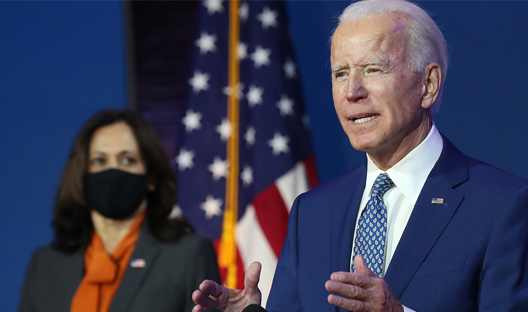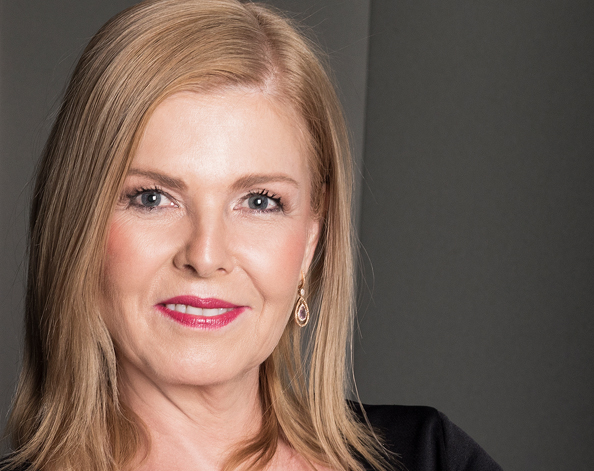Receive Focus insights straight to your inbox
What has changed since the September 2020 MPC meeting
International dynamics
The global growth outlook has improved with:

1. US election uncertainty largely out of the way. The outcome is seen to be supportive of emerging economies with domestic and foreign policies impacted by a Democrat White House-a Republican Senate-Democrat lower house (although President Trump is still contesting the election outcome and the Senate outcome might only be known by 5 January 2021).

2. The now realistic prospect of a vaccine with the potential to normalise economic activity in 2021.
The effect of these two developments has already seen falling Chicago Board Options Exchange Volatility Index (VIX) volatility post-the US election, a weaker US dollar (USD), a steeper United States Treasury (UST) yield curve and a return of global capital flows to emerging equity and debt markets.
There are considerable unknowns with regards to the reaction function of US monetary policy which has adopted an average inflation target of 2%, thus making allowance for inflation to overshoot the target. The current configuration of the US government suggests a more prolonged accommodative monetary policy; but a vaccine could shorten the duration and reduce the risk of additional monetary accommodation.
However, growth risks have not abated with the acceleration of coronavirus infections in the United States, United Kingdom and parts of Europe with differing levels of restrictions applied. However, growth in Asia and China remains robust and uninterrupted by more COVID- 19 infections, which is another factor supporting the growth outlook for emerging markets in conjunction with a more trade friendly Biden-administration’s foreign policy.
These dynamics are more constructive for South Africa’s growth outlook, support our weaker USD view and suggest increased global capital flows which would be supportive of the rand carry trade. The global developments are also important to catalyse foreign savings to finance the current account deficit and a large budget deficit (14.6% of GDP in FY21 and approximately 10.1% of GDP in FY22), in addition to helping to fund the infrastructure programme.
The current account deficit of 2.4% in Q2 20 could turn into a surplus in Q3 20 on the back of a large merchandise trade surplus but is likely to widen once the economy starts to expand again
South Africa dynamics
GDP growth faces upside forecasting risk – marginally less negative

A South African manufacturing plant.
We expect a small upward revision to 2020’s and 2021’s GDP growth forecast of - 8.2% and 3.9% respectively. Incoming indicators for Q3 20, such as mining and manufacturing production, have surprised on the upside. This suggests a rebound in the quarterly growth rate of close to 50%q-o-q seasonally adjusted and annualised rate (saar) following a contraction of 51% q-o-q- (saar) in Q2 20. There have been two important announcements re-President Ramaphosa’s Economic Restructure and Recovery Plan (REPP) and the Medium-Term Budget Policy Statement (MTBPS).
The former’s effect on growth will take longer to manifest, although it has the potential to lift business confidence, whereas the intention of the MTBPS is to reduce the risk of a debt trap through a three year fiscal consolidation programme.
This is hinged on containing current spending levels, mainly by freezing the public sector wage bill for three years. The decision was influenced by research that shows South Africa’s fiscal multiplier from an increase in government spending is smaller than 1. We think this dynamic may not yet be factored into the SARB’s base case economic forecast, given considerable implementation uncertainty.

Following the aggressive rate cuts of 275bps since March 2020 and an approximate 12 month transmission period, we think a slightly less negative stabilisation to the GDP growth outlook supports the MPC remaining on hold at the November meeting.
Inflation - two halves
Near term inflation could be revised lower but a firmer rebound in H2 20 is possible. The SARB’s inflation trajectory and changes in assumptions will be closely monitored. We expect the near term headline CPI inflation forecast to be lowered but H2 20 to return to above 4.0%. The key inflationary drivers and directional changes over the past two months are the following:
- The starting point for the ZAR could be 1.6% lower, starting at around R16.80/$ relative to September’s assumption of R17.07/$ to 16.80/$ (currently at 15.50/$). The ZAR is currently trading at around R15.50/$, which is not far from the March MPC assumption of $15.50/$ but 6.1% above the January MPC assumption of R14.6/$.
- The fuel price was reduced by 3.9% over the past two months on account of a decline in the oil price and stronger rand. This assumption was not factored into the September forecast. The Brent spot forecast for 2021 is currently at $43.6/bbl, which is 7.2% below the SARB’s forecast of $47.0/bbl. The oil price has averaged $41/bbl in September and October compared to $44.1/bbl in July and August as global demand forecasts have been lowered owing to the acceleration in coronavirus infections. A drawdown in US inventories have supported the recent rebound. There is currently an over recovery of 40/cl which signals a further price cut in December of approximately 30c/l.
- A number of medical aid companies have indicated that the annual tariff increase in early 2021 could be postponed to July 2020. StatsSA measures the increase in medical aid insurance tariffs once a year in February (and occasionally in April). If they are aware of that a company will change a price outside of the regular schedule, the survey will include the price change in that specific month. So if there are 10 companies that usually raise tariffs in February and five of them postpone to July, StatsSA will measure prices in February and July. The statistical effect is sizable, with the monthly contribution of a tariff increase of 7.0% adding 0.7ppt to the monthly increase. A postponement of the tariff increase could potentially lower headline CPI inflation to below 3.0% in Q1 20. An increase in July, estimated to be 7.0%, will correspond with an electricity tariff increase of at least 10%, that could combine to lift headline CPI inflation by more than 4.0%.
- Shortages of building and construction materials such as cement, steel, bricks and timber, have been felt. This holds implications for construction inflation and the execution of the infrastructure plan.
Inflation forecast
These dynamics suggest that the Reserve Bank’s near term inflation forecast for Q4 20, Q1 21 and Q2 21 from 3.3%, 3.4% and 4.6% could be lowered to ~3.0%, 2.8% and 4.0% before acceleration to an average of ~4.4% in Q2 21.
Balance of risks to inflation
The SARB deemed the overall risks to inflation at the September forecast to be balanced. At that stage, global food prices had bottomed out, the oil price remained low, local food price inflation was contained and the pass- through from currency depreciation was expected to stay muted, with no demand side pressures evident. Key concerns related to electricity and other administered prices, with additional exchange rate pressure from heightened fiscal risks. We see the balance of risks to inflation in the near term to the downside but expect a tilt towards 5 – 4.5% in mid-2021.
Sovereign credit rating announcement by S&P and Moody’s on Friday, 20 November, after hours
The MTBPS extended fiscal consolidation from two years to three years, but is likely to be viewed by rating agencies in the context of a willingness to tack the wage bill, increasing spend towards infrastructure, President Ramaphosa’s broader growth plan, and progress from the NPA in charging those involved in state capture.
This balances the risks of downgrades vs maintaining the status quo after South Africa’s downgraded in March 2020 from investment grade to sub-investment grade with a negative outlook (Ba+, negative outlook) and S&P and B, with a stable outlook. While the CDS spreads and hard currency debt spreads have narrowed over the past two weeks, South Africa’s spreads continue to trade at the level B – which is below Brazil but above Turkey.
The South African Government Bond (SAGB) yield curve, which initially flattened with risk-on sentiment, has not been able to sustain lower yield levels. The yield on the 10yr SAGB reached a low of 8.75% but ended the week 12bps higher at 8.87%, which is 43bps below the five month average of 9.30% that prevailed from mid-June to early November.
The key issues are if Moody’s can provide South Africa with a reprieve pending the implementation of the various announcements.
Money market rates and liquidity
Money market interest rates continue to be opaque in assessing whether a 25bps rate cut is discounted in the rates. The 1 and 3m JIBAR rates reflect very little difference (3.325% and 3.333% respectively) with the nine and 12m JIBAR rates at 3.46% and 3.58% respectively.
We remain of the view that excess liquidity has contained short-dated rates to levels below the repo rate. The 1x4 Forward rate agreement (FRA) rate, trading at 3.27% (which assigns a probability of around 22% of a rate cut), whilst the 9x12 FRAs trade at 3.45%, possibly signalling an increase in economic activity and balance sheet growth which could see a normalisation in the 3m Johannesburg Interbank Agreed Rate (JIBAR), approaching the repo rate at 3.5%.




